Platyptilia cf. gonodactyla
([Denis & Schiffermüller], 1775)
-
 Subfamily: Pterophorinae
Subfamily: Pterophorinae -
 Wingspan: 21-29 mm
Wingspan: 21-29 mm -
 Flight period: May - Oct
Flight period: May - Oct -
 Spread: Common
Spread: Common -
 Host plants: Asteraceae
Host plants: Asteraceae
Information
The Platyptilia gonodactyla also known as The Triangle Plume is a moth of the Pterophoridae family, with a wingspan of 21-29 mm.
It is found throughout Europe, with the exception of Iceland and Portugal .
Its range extends to the Palearctic Ecozone. ***
In Italy it is also present in the islands. *
The wings of Platyptilia gonodactyla are divided into laminae. The front wings are light brown with dusting and with dark brown designs.
In particular, a dark brown triangle bordered with white is clearly visible, with the base on the costa and the apex approximately in the middle of the wing. The costa is finely dusted in brown.
The front wing is divided at about 4/5 of the length into two fringed laminae, the edge is fringed in ocher, with the terminal part of the brown fringes.
The rear wing is divided into three brown colored laminae, the longest widening near the apex and ending with a rounded apex, the second joined about a third of the length with the first,
it widens to tighten with a pointed apex.
The third is shorter and narrower and has a brown spot on the lower fringe. All the posterior laminae are strongly fringed.
Head and thorax are in the background color of the wings, the abdomen of the same color as the bottom has brown and white marks on each segment.
The Platyptilia gonodactyla is a bivoltine moth, it reproduces in two generations from May to October, depending on the location.
They thrive in humid places, grassy habitats, forests, wastelands, pond edges and along roadsides.
They are regularly attracted to artificial light.
They overwinter in the larva stage. The larvae of the spring generation feed in the stem from the base to the receptacle of the flower head, with pupation occurring there or on a leaf.
The summer generation is a miner.
The mine is small, transparent, irregularly shaped, there are several in a single leaf. After some time the larvae feed freely on the underside of the leaf or under a folded leaf margin.
The caterpillars of the first generation are visible towards the end of March, and have a length of about six millimeters, have a glossy black head.
The prothoracic shield is black and is divided by a beautiful and bright central line. The body is yellow and reddish, the bristles are blackish and translucent.
The anal area is blackish gray with black spots. The abdominal legs are colored like the body. ****
The color of the pupae can vary from green to reddish brown. **
The larvae are oligophages and feed on Asteraceae, in particular on Petasites hybridus and Tussilago farfara. *****
* Lepidoptera mundi https://lepidoptera.eu/ - Fauna Europea https://fauna-eu.org/
** Bestimmungshilfe für die in Europa nachgewiesenen Schmetterlingsarten - http://lepiforum.de/
*** Mindat.org - https://www.mindat.org/taxon-1859046.html
**** Jim Lindsey - Retired Professor of Bio- & Social Statistics - https://www.commanster.eu/commanster/Insects/Moths/SuMoths/Platyptilia.gonodactyla.html
***** Plant Parasites of Europe, leafminers, galls and fungi - https://bladmineerders.nl/
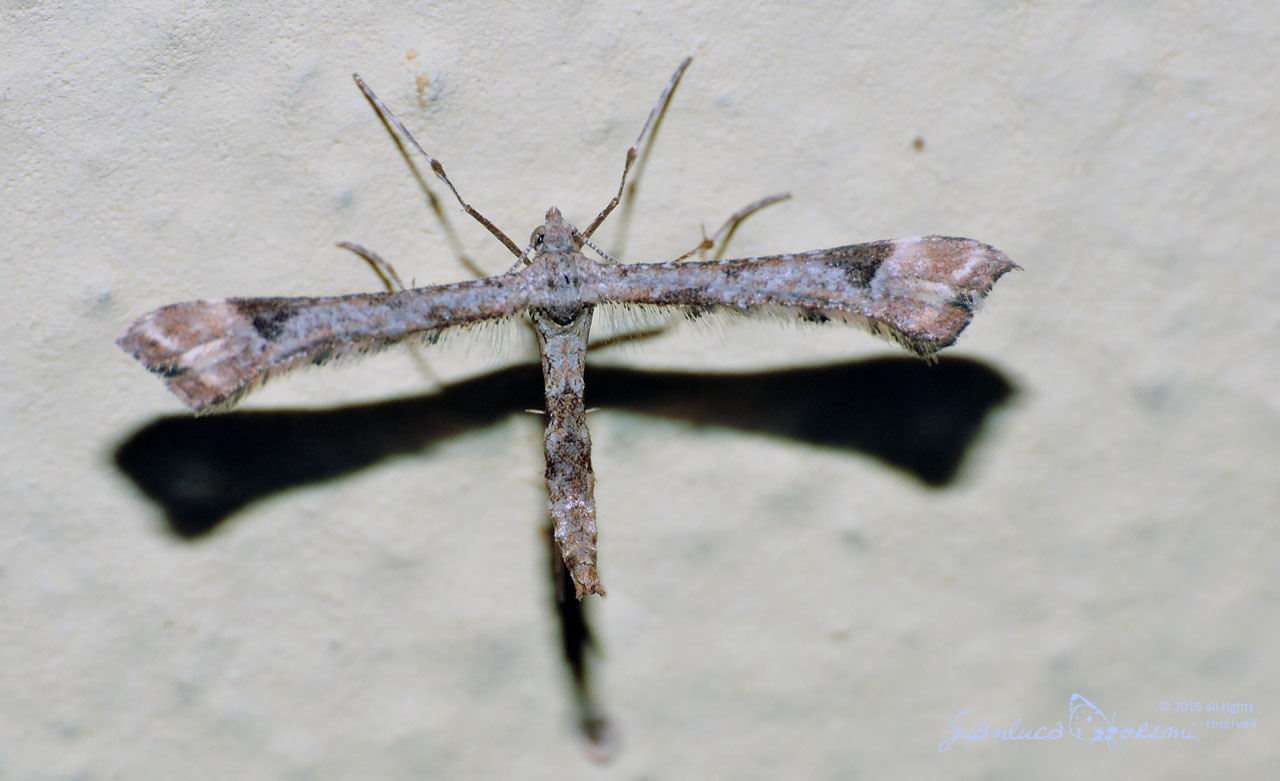
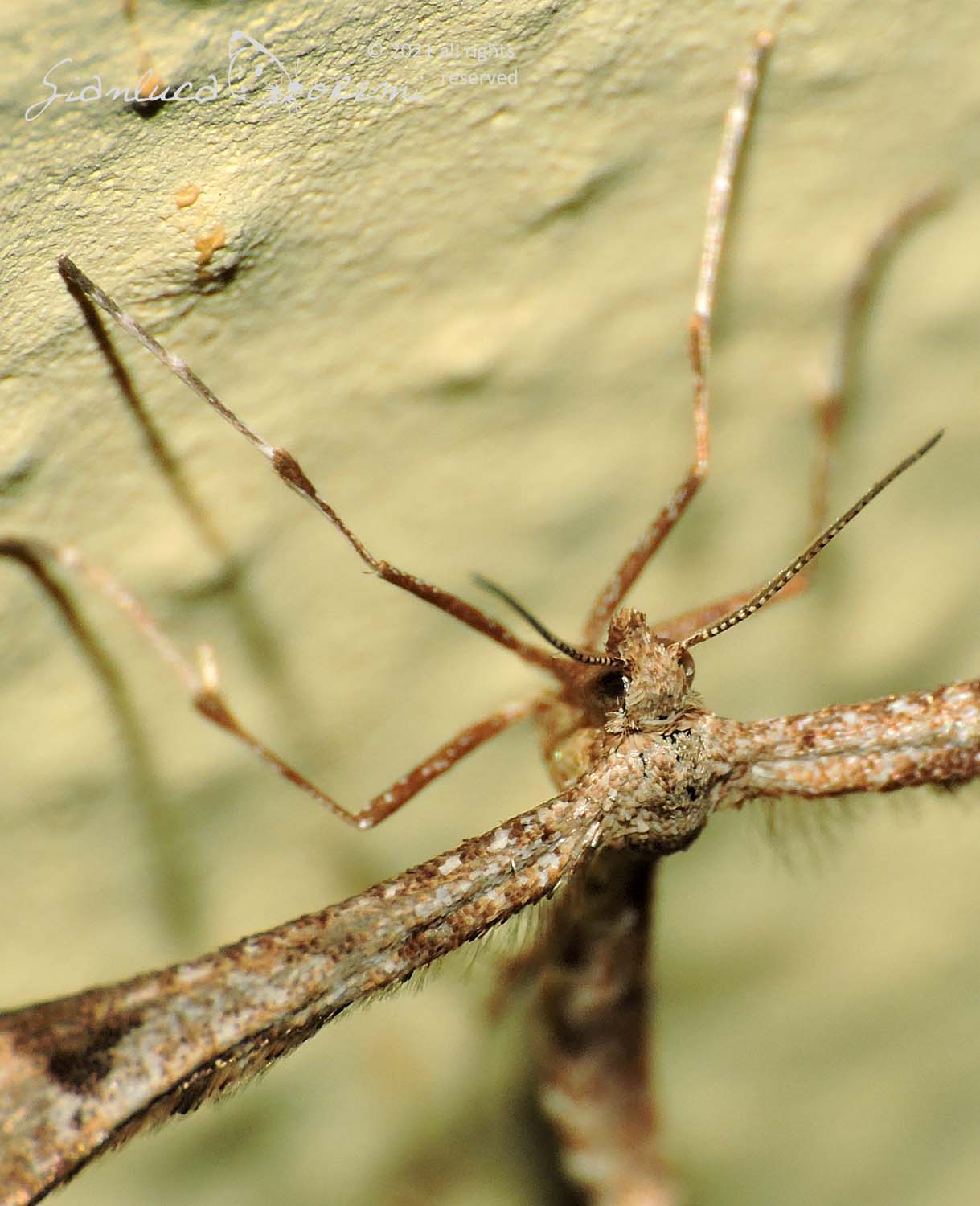
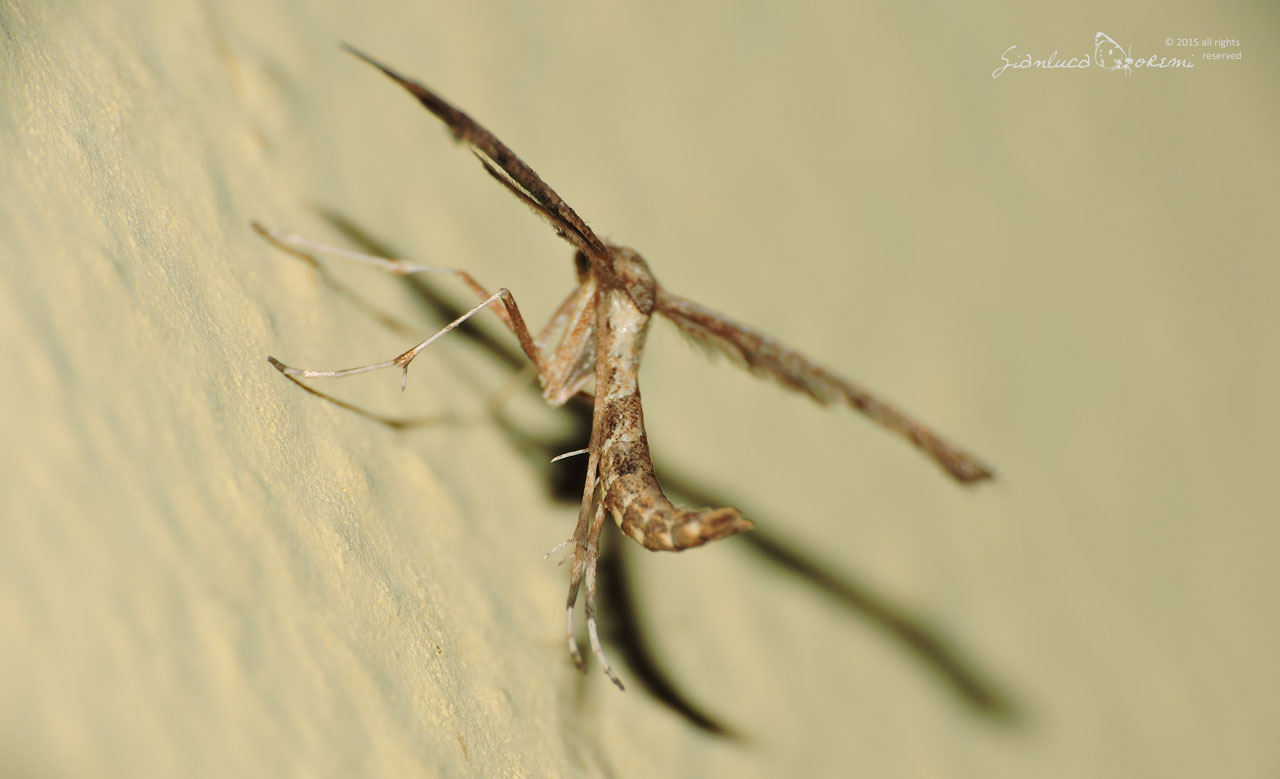
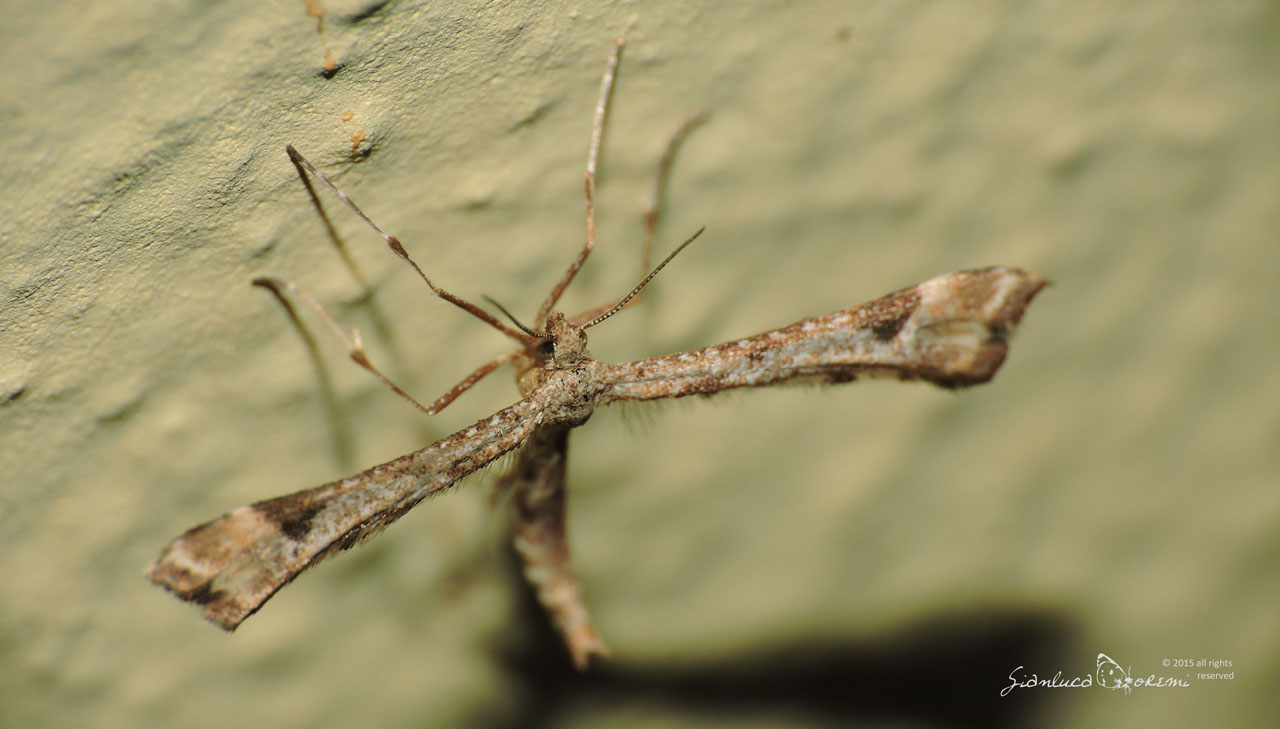
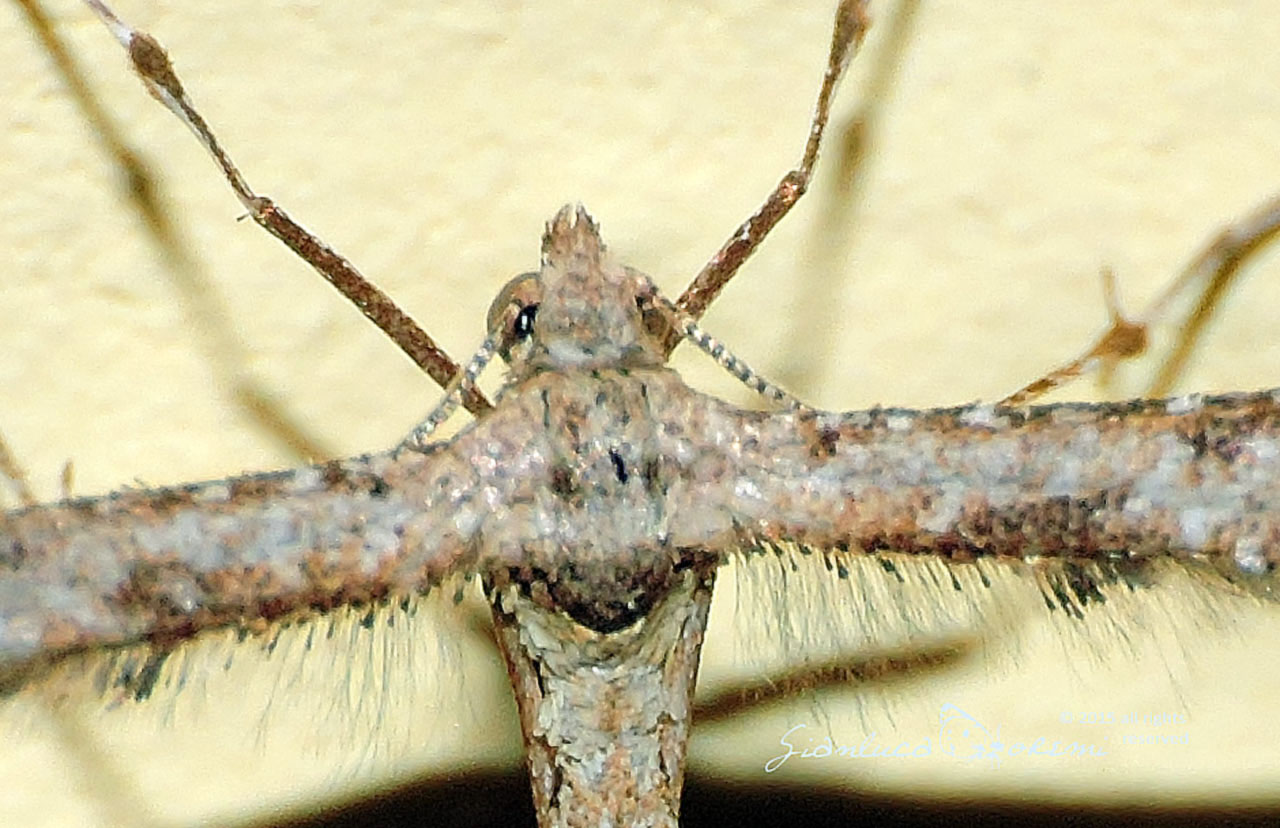

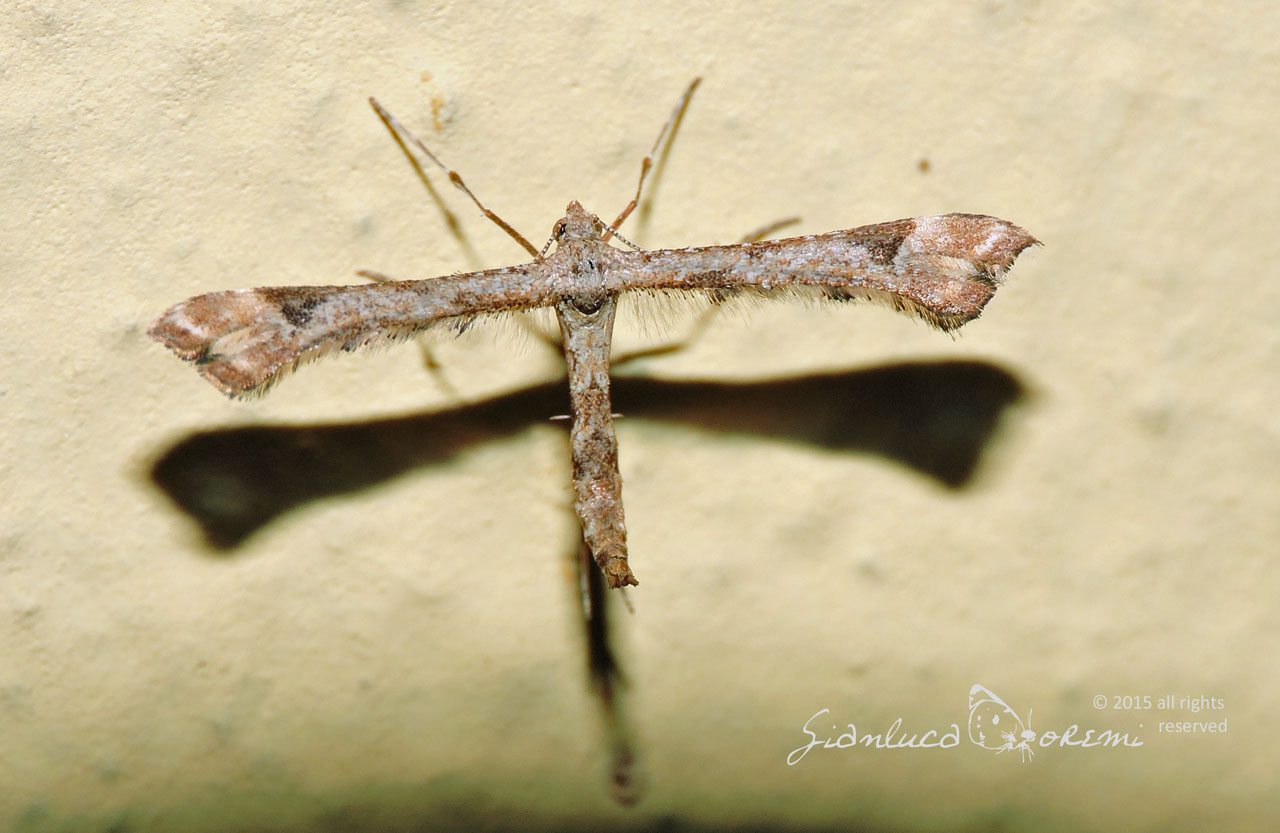
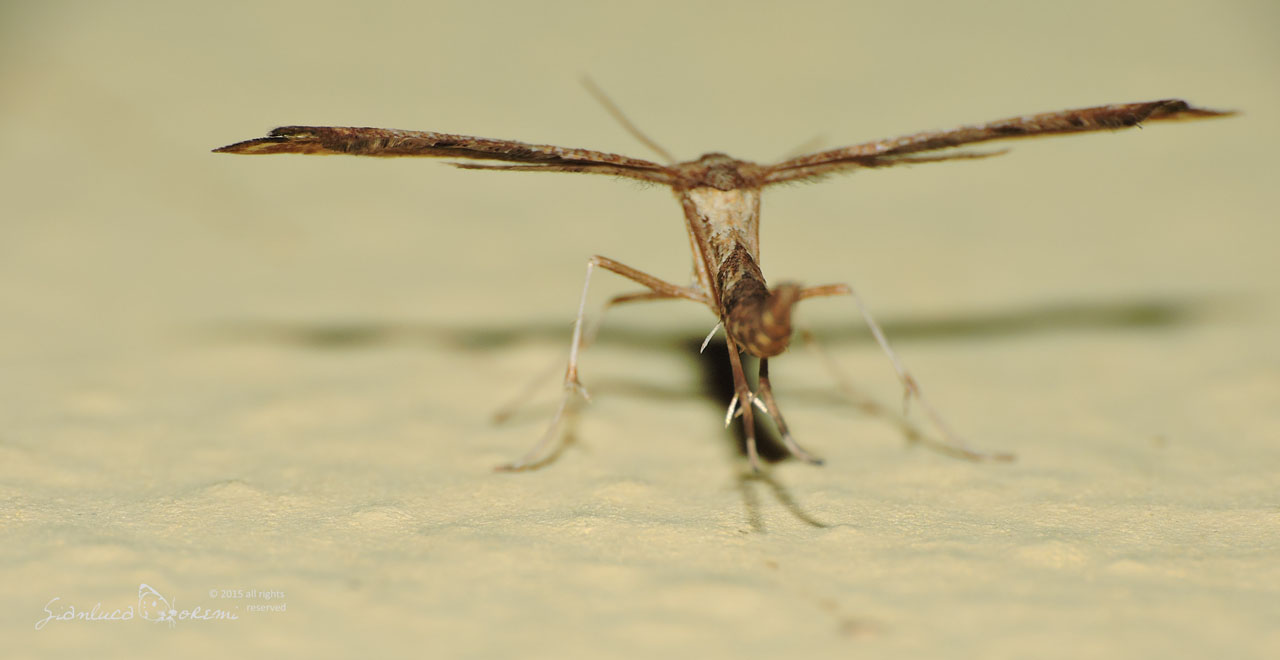

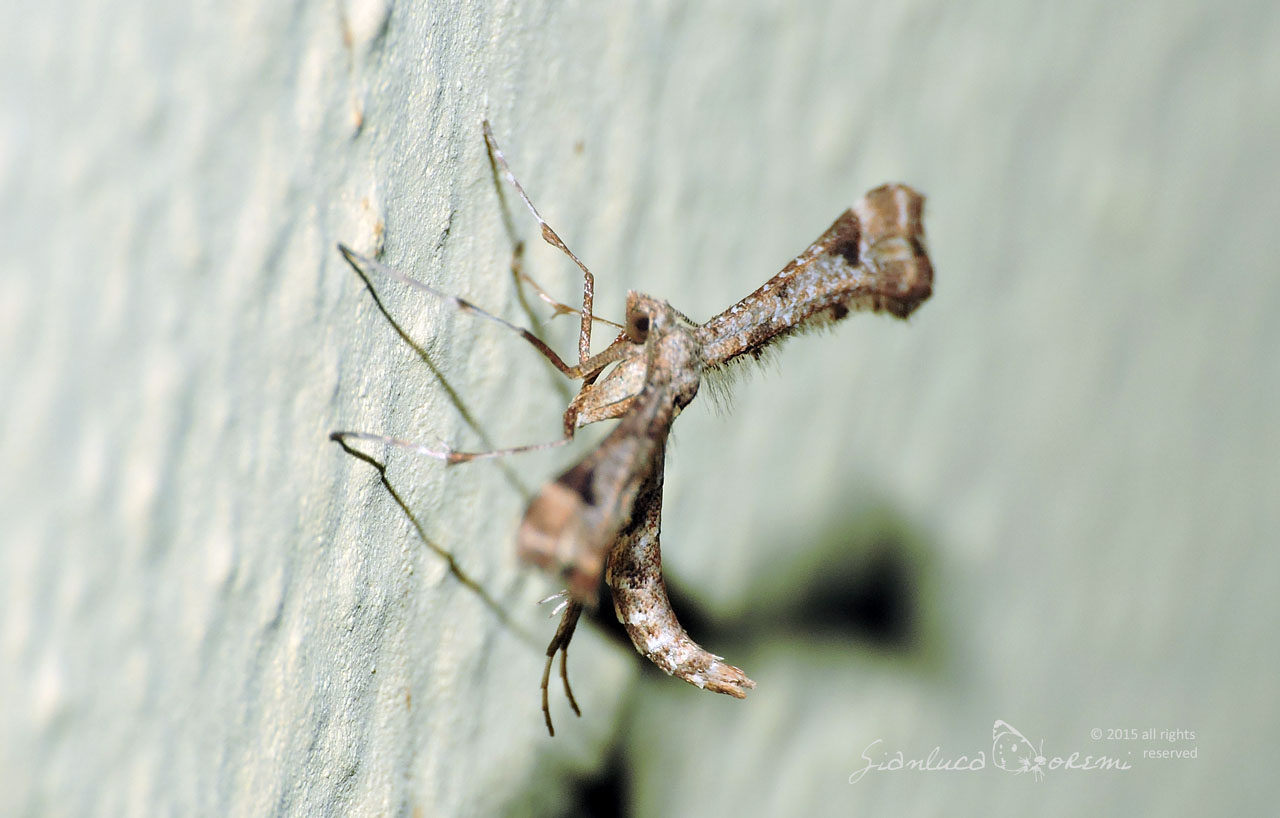

 EN
EN ITA
ITA
Social and publications